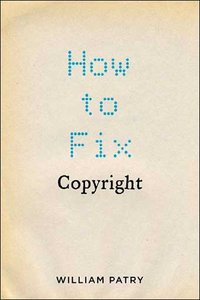How to Fix Copyright |

|
 Diese Seite wurde seit 14 Jahren inhaltlich nicht mehr aktualisiert.
Unter Umständen ist sie nicht mehr aktuell.
Diese Seite wurde seit 14 Jahren inhaltlich nicht mehr aktualisiert.
Unter Umständen ist sie nicht mehr aktuell.
 Zusammenfassungen
Zusammenfassungen
 The arrival of the Internet was revolutionary, and one of the most tumultuous developments that flowed from it--the upending of the relatively settled world of copyright law--has forced us to completely rethink how rights to a work are allocated and how delivery formats affect an originator's claims to the work.
The arrival of the Internet was revolutionary, and one of the most tumultuous developments that flowed from it--the upending of the relatively settled world of copyright law--has forced us to completely rethink how rights to a work are allocated and how delivery formats affect an originator's claims to the work.Most of the disputes swirling around novel Internet media delivery systems, from Napster to Youtube to the Google Book Project, derive from our views on what constitutes a proper understanding of copyright. Who has the right to a work, and to what extent should we protect a rights holder's ability to derive income from it? Is it right to make copyrighted works free of charge?
One of the central figures in this decade-plus long debate has been William Patry, who is now the Senior Copyright Counsel for Google. In How to Fix Copyright, he offers a concise and pithy set of solutions for improving our increasingly outmoded copyright system. After outlining how we arrived at our current state of dysfunction, Patry offers a series of pragmatic fixes that steer a middle course between an overly expansive interpretation of copyright protection and abandoning it altogether. We have to accept that we cannot force people to buy copyrighted works, but at the same time, we have to enforce laws against counterfeiting. Most importantly, we have to look at the evidence--what furthers creativity yet does not deny protection to those who need it to create? We should also reject the increasingly strident (and, he argues, ill-informed) denunciations of delivery systems: Google Booksearch and DVRs are merely technologies, and are not the problem. Throughout, he stresses that we need to recognize that the consumer is king. Law can only solve legal problems, not business problems, and too often we use law to solve business problems. Practical yet prescriptive, How to Fix Copyright will reshape our understanding of what the real problems actually are and help us navigate through the increasingly complex dilemmas surrounding authorship and rights in our digital age.
 Dieses Buch erwähnt ...
Dieses Buch erwähnt ...
 Dieses Buch erwähnt vermutlich nicht ...
Dieses Buch erwähnt vermutlich nicht ... 
 Nicht erwähnte Begriffe |
 Tagcloud
Tagcloud
 Volltext dieses Dokuments
Volltext dieses Dokuments
 Bibliographisches
Bibliographisches 
 Beat und dieses Buch
Beat und dieses Buch
Beat hat dieses Buch während seiner Zeit am Institut für Medien und Schule (IMS) ins Biblionetz aufgenommen. Beat besitzt kein physisches, aber ein digitales Exemplar. (das er aber aus Urheberrechtsgründen nicht einfach weitergeben darf). Es gibt bisher nur wenige Objekte im Biblionetz, die dieses Werk zitieren.











 Copyright
Copyright creative commons
creative commons Europa
Europa Evolution
Evolution Geschäftsmodell
Geschäftsmodell Google
Google Internet
Internet Kreativität
Kreativität Problem
Problem Technologie
Technologie USA
USA , 903 kByte)
, 903 kByte) 



 Biblionetz-History
Biblionetz-History